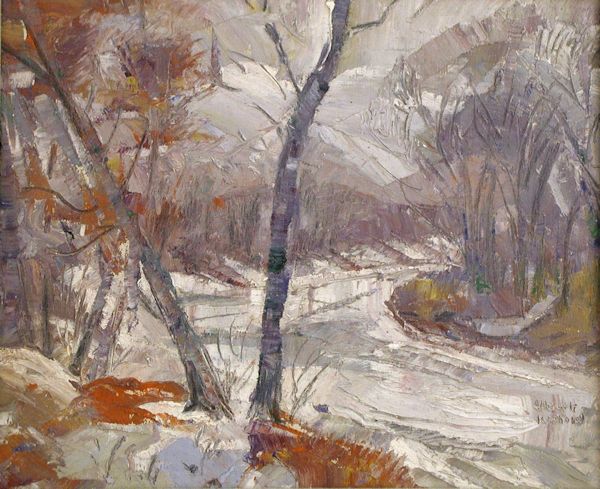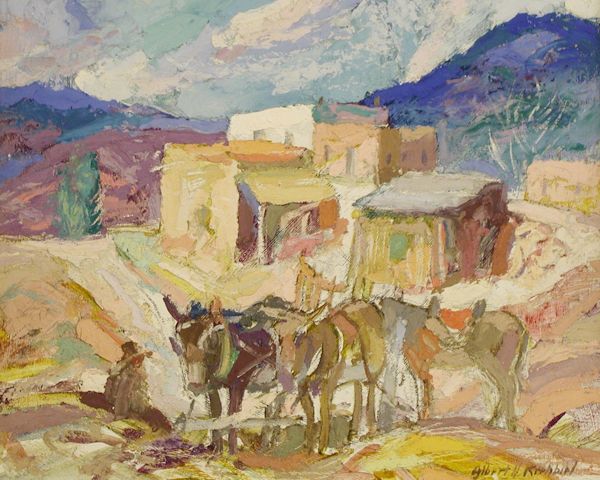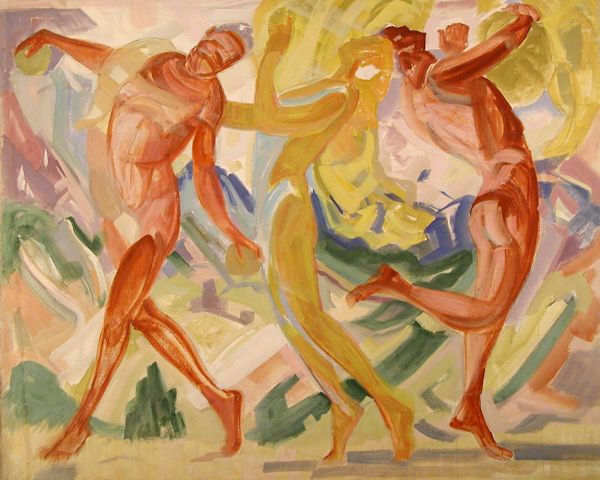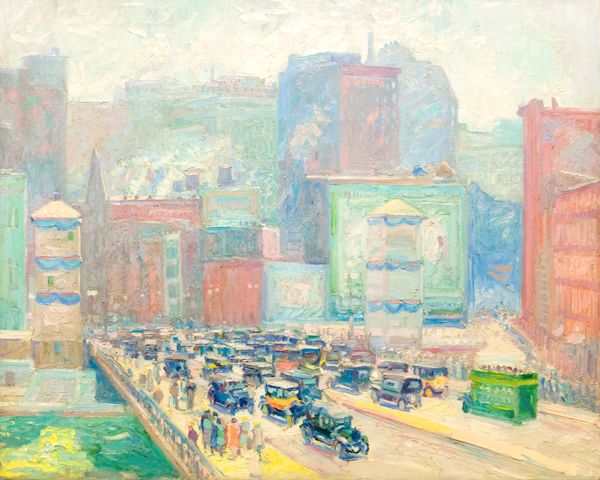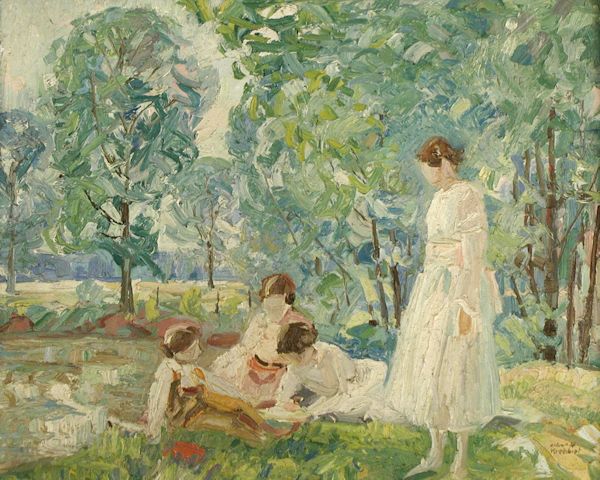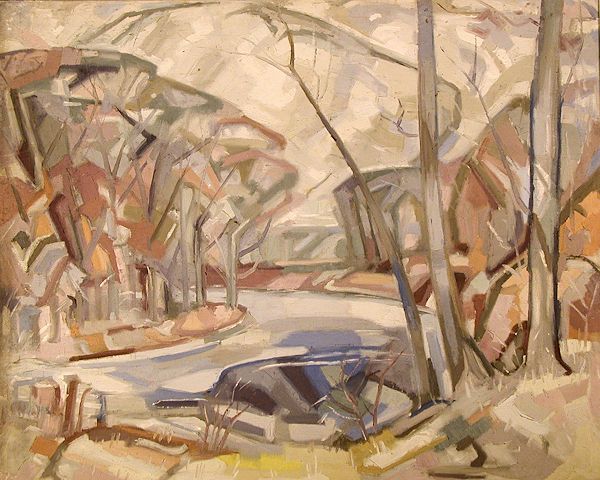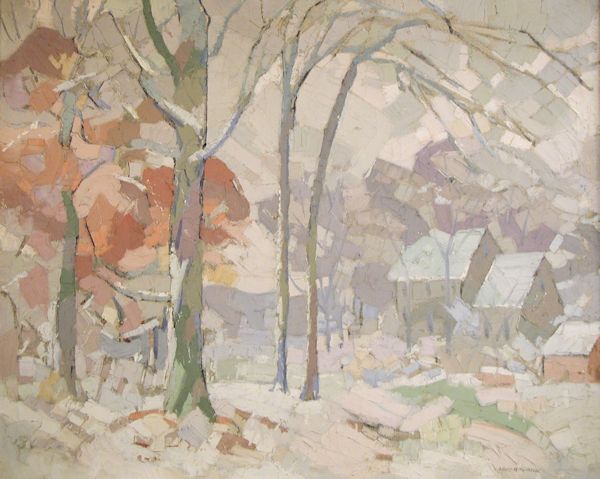Krehbiel - Overview of the Artist
Albert H. Krehbiel, (1873-1945), was a monumentally talented artist, professor and muralist. Art critic Eleanor Jewett once wrote of Krehbiel’s vibrant landscapes: “His pictures will long be remembered for their happy note, their impression of joy in nature, and the sheer beauty of their impetuous, irresponsible color.”
The son of a blacksmith and buggy maker, Albert grew up in Newton, Kansas. His artistic talent was discovered by the director of the Art Institute of Chicago, William Merchant R. French, during one of his lecture tours and he encouraged Albert to enroll at the Art Institute. Within a few years of enrolling, Krehbiel was awarded a traveling scholarship which enabled him to study abroad under the greatest of the European artists, including Jean Paul Laurens at the L’Academie Julian in Paris. In Paris, Krehbiel received honors seldom bestowed on Americans. In spite of his success in Europe, he returned to the United States in 1906 with four gold medals, the coveted Prix de Rome, and exposure to the impressionists’ plein air landscapes. Upon his return he married fellow artist and classmate from the Art Institute, Dulah Marie Evans, and was offered a full-time faculty position at the Institute. In 1907 he was awarded a commission to paint the murals for the Supreme Court building in Illinois, selected over 22 other acclaimed artists. It took Albert and Dulah four years to complete the historical and allegorical works. These were the last works Krehbiel completed in the traditional style of his academic training, opting instead for plein air landscapes, painting from life.
Krehbiel painted an amazing body of work, ranging from neo-classical to impressionism to more modernistic pieces including landscape pastels sketched while looking through a prism. The media ranged from charcoal and pastels to watercolors and oils. He was an intensely driven yet gentle artistic genius. He summed up his life in a letter to his sister stating ”… since consistent work is bound, in my line, to produce something lasting, I hope some day to give pleasure to others in helping them to fish up some pleasant recollection that had most slipped away in the past.”
